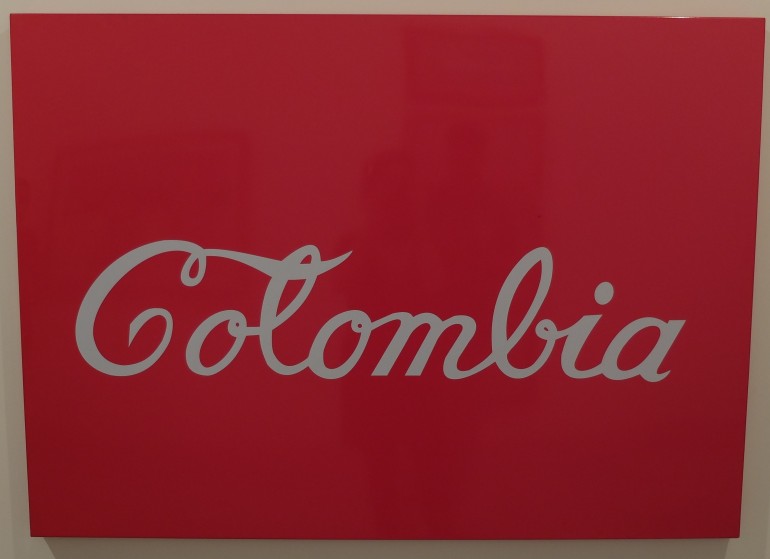Skip to photos here. When mentioning Medellín as our next temporary home, most people looked at us as if we’d gone raving mad. During my first teleconference the day after arriving, the first thing someone asked was “You’re in Colombia? Why am I not hearing gunshots in the background?” In many people’s minds, Medellin continues to be the “Most Violent City in the World,” a pity since that title is 30 years old. A LOT can change in three decades, and it has; in 2013, for example, The Wall Street Journal named Medellín the “Innovative City of the Year.” And to dispell two other misconceptions right from the start − One: It is ColOmbia (and not ColUmbia), and Two: being among the world’s largest exporters of cocaine counts as but a small part of this countries’ rich history.
Excited to finally set foot on the South American continent, we were curious to see if we would enjoy living here. What immediately struck us was the city’s ethnic diversity. Our home was a lovely apartment on the top (32nd) floor of one of the high-rises in the El Poblado district, where most of the foreign crowd live, and we easily settled in. From the moment of our arrival, both of us felt extremely welcome, and that continued throughout our whole time in Colombia. My Spanish – even after a few lessons during our first week – is borderline non-existent, and you cannot really get by with English, but people seemed eager to understand me. I had some very lively, Italian-infused, nonsensical discussions with taxi drivers and sales people alike.
Right from Day 1, we continued our routine of working from the early morning onwards, and getting out in the late afternoon to discover this “Cite of Eternal Spring”, so called due to its relatively temperate weather year-round. To get a first overview of the city, we took a Walking Tour, which turned out to be THE best one we’ve ever gone on. We learned that before Medellín became synonymous with white powder and violence, this area was known for the gold found in the area, and later because of the delicious coffee produced here (and it was!). Further, we learned that the 15th century brought many European settlers, among them Hasidic Jews and Spanish Basques, both groups escaping persecution.
Our other excursions included trips to the Jardin Botanico (a nice place to spend a lazy afternoon), and the Museo de Antioquia (a wonderful art museum), where we saw a special exhibit on Botero. Fernando Botero is a Medellín boy, and many of his sculptures can be found in various parts of the city. I’ve never liked his artworks all that much: He contends he “fattens” his characters up to give them sensuality, a notion I simply don’t understand.
As always, food played a big role for us, and we enjoyed sampling Colombian dishes and trying many different restaurants in town. One of the more famous dishes is the Bandeja Paisa, a platter filled with steak, crackling pork, sausages, rice, beans, avocado and an occasional fried egg. It’s not for the faint hearted or anybody trying to avoid heart disease, and not something we ate more than a few times. Our favorite restaurant (by far!) turned out to be the place where we had our first meal: Osea. It had a wonderful atmosphere, great service, perfect-sized menu, delicious homemade ginger ale, and the most divine fish taco we’ve ever had.
The variety of fruits at local supermarkets was astonishing, and many of them I had never seen. We proceeded to buy one “new fruit” every time we went and had a fun time trying to figure out how to eat them. Other random first impressions: Colombians seem very conscious of their dental hygiene; I regularly came across people brushing their teeth in restaurants after meals. Most pharmacies are “German Pharmacies” (Is that because German healthcare is considered good?), and store mannequins have enormous breasts (I didn’t have to guess why that is). Also of interest: street vendors offer cellphone minutes… apparently a new business.
We were also impressed by the deep sense of family people seem to have here. Riders in the subway would go out of their way to free up seats for older people, mothers with children, or pregnant women, and many restaurants had special activities for families. Large malls also had special family restrooms, and on Sundays, where one of the main streets was blocked for runners, skaters and bikers, we saw many families enjoying an active morning together. “Ciclovia” as it is called, apparently originated in the capital Bogota, and has been ongoing for the past 20 or so years.
We’re hard-pressed to find anything we didn’t like in our first weeks there. The only problem we ever encountered was that taxi drivers repeatedly declined our business. We’d jump in the taxi, give the location for where we wanted to go, and they would shake their heads and make clear that they weren’t going to budge. It wasn’t ever a negative encounter, but it was a bit odd. We later found out that the nomenclature of the streets is so confusing that they often have no idea where certain places are, so I presume it might have been that.
In short; Medellín was one of the places we fell in love with immediately, and after a little over a month there, we truly wanted to stay.

